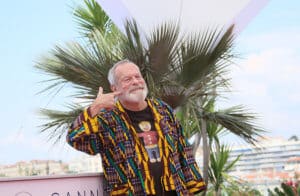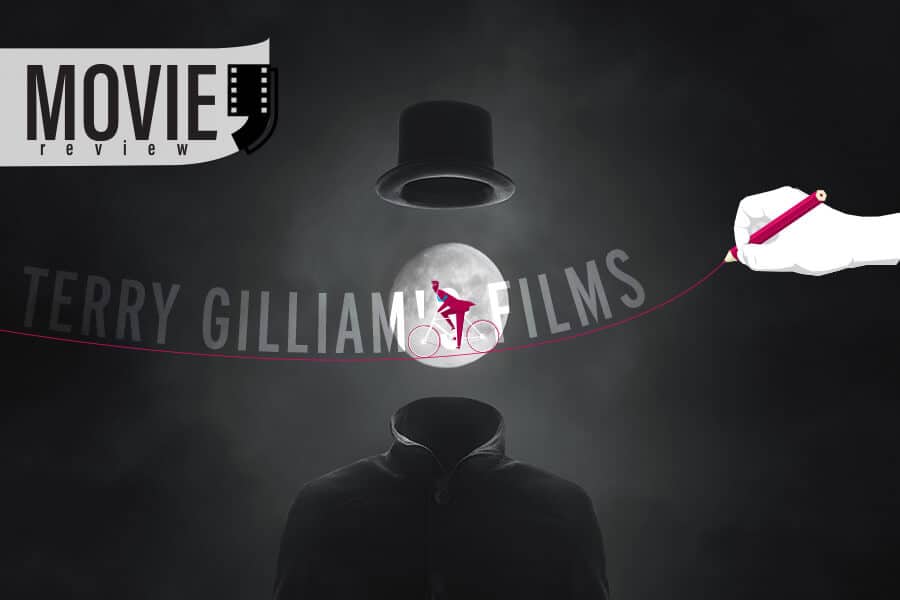In the fantasy genre, this American man with British roots create dozens of stories of a chaotic world. But Terry Gilliam called himself the one who just shoot everything around the way it does exist. Brazil, 12 Monkeys and The Zero Theorem are still eccentric and outstanding films. Terry Gilliam directed them in the cycle of strategy against the bureaucracy and government system that manipulate people by setting the stupid rules. At the same time, Joan Rowling saw Terry Gilliam the only director, who could make Harry Potter in the closest perspective to her. How he, overwhelming and extraordinary director, actor and dreamer, sink into the mind of youngsters and shot the films from the future in the late 80s?
How Terry Gilliam became Terry Gilliam?
The Monty Python – comedians, that formed the TV shows for more than fifty years and Terry Gilliam was one of them. He is a performer without we couldn’t imagine the crew of British comics, even though Terry Gilliam was born in the US. The reason he renounced American citizenship and the reason to make a film to show our world in the swamp of bureaucracy is the result of the looming conflict within Terry. The Monty Python troupe, in turn, has become a haven for him so complex and multi-edged, and looking deeper – such a precious feeling when you finally return home. Finally, he found his habitat, where Terry could rise his talent and realize the energy of social justice and crazy genius of the utopian universe. Terry Gilliam is a man with limitless imagination who has managed to preserve this quality through time, without being exposed to the template of modernity.

Not accepting the world as it is, but seeing it as others don’t. No, this does not mean that he escaped from reality, on the contrary, most of his films are the tool to show that the world has the broadest possibilities, and they are all beyond our understanding. Moreover, the TV, radio and other informational sources blocked the conscious translated things like someone wanted to be them. So, in his bio were three most sharp turns why Terry Gilliam finally appeared in the Monarchy. First, after graduating, like many youngsters, he was forced to spend half of the year in the army. That times predicted the US to war in Vietnam. Despotism and suppression left a bitter residue, as another accident in the history – violent crackdown on a peaceful anti-war gathering in Los Angeles. And the last, but not least, he and his friends were not allowed to Disneyland since their hair was slightly longer than it was considered acceptable. Terry Gilliam belonged to informal youth and the society of those times treated everyone who willing badly to stay out of the crowd. In 1967, Gilliam moved to London, where he joined a Monty Python band.
Coffin, plastic surgery and bills
Many of his films are about the fight against the system particularly in Brazil, 12 Monkeys and The Zero Theorem. Three on screens show trapped system, life and predictions from different views. 12 Monkeys confused everyone who dipped into the philosophy of the plot. However, the common thing for either – the protagonist behave, as a naive fool with genuine heart. The tempers intertwined with inner conflict – to change the system and society for the better things. Love and bright intentions, without stubborn stages in utilities. Together with Roger Pratt, he shot Brazil, 12 Monkeys and The Fisher King.
I concentrate on Brazil, as the one of complete in all sense. The main hero, Sam Lowry (Jonathan Pryce) worked as ordinary office plankton. Every day he sees dreams about a fantastic country in which he, with wings on the back, ploughs the heavens. There he meets a beautiful girl, which he would find in reality later. Terry makes a footnote at the very beginning, putting the viewer into the life of this most real girl (Kim Greist). She’s just, let’s say, weird, like the main character.
In a perfectly ordinary situation, horrible things happen – a fly gets into a typewriter. At this point, a batch of fine receipts for Harry Tuttle (Robert De Niro) was typed. The fly print turned the hero’s last name into Buttle. By coincidence, an innocent person was punished. Only the main character can solve the problem. The plot takes on the appearance of a real dystopia with the excellent shooting technique, and rising conflict leads the main character to his dream. For which he has to lie into the coffin.
Meanwhile, the topic of social bureaucracy is not the only one. It also shows the world of the eternal pursuit of prestige and fashion on demand: plastic surgery, braces, techniques for tightening the skin to the ears. This culture of beauty utmostly exaggerated. When a friend(Barbara Hicks) of his mother (Katherine Helmond) dies from acid injections, Gilliam depicts the body in a coffin as an anatomical set destroyed away by acid. On the other side, a rejuvenated mother, with hundreds of surgeries behind, surrounded by young guys, younger than her son. The third conflict theme, the director shows sycophancy and hypocrisy. Mother had a boot instead of a hat. A more wacky appearance is hard to find. Nevertheless, everyone smiled graciously and speak out false compliments for the sake of praise and influence. It’s hard to call Terry Gilliam a director of chaos when all this chaos is awake from reality.
Onscreen and visual techniques
The whole image of the state that Gilliam depicts in the Brazilia is an ugly, dry structure, with plastic faces and broken equipment. That was the point of view the director begins to shoot the most inexplicable shots, every episode. Wide-angle shooting made small sets look big. The atmosphere of a dystopian monster state was impossible to convey. Onscreen techniques in Gilliam’s films are often structured to distort perspective. He uses unusual angles: frog perspective (shooting from a point on the floor), which turns the viewer into a little man in the big world; shooting from the ceiling; Dutch angle (when the camera looks at the character below against the background of the obstructed horizon).

The conflict between rationalism and mysticism, mechanical and vivid, practical and senselessly beautiful, the world of reality and the world of dreams are Gilliam’s favourite stories. The visual range based on a combination of the incompatible: in Brazil and The Zero Theorem, the neighbourhood of digital monitors with ridiculous pipes and lenses, whereas cyberpunk meets steampunk. Because of this vision, his films perceived from the second or third viewing, when there is no longer any need to accustom oneself to unusual angles and compositions.
Terry Gilliam, as one of the directors who started the era of film transformation. It`s better to call him inventor in thinking genre. As he never gave the answers to the conflict. Gilliam aimed everyone to make his own opinion and create a world of impossible reality.
Photos: Shutterstock / Photomontage: Martina Advaney
More movie reviews here:
Support us!
All your donations will be used to pay the magazine’s journalists and to support the ongoing costs of maintaining the site.
Share this post
Interested in co-operating with us?
We are open to co-operation from writers and businesses alike. You can reach us on our email at [email protected]/[email protected] and we will get back to you as quick as we can.









